
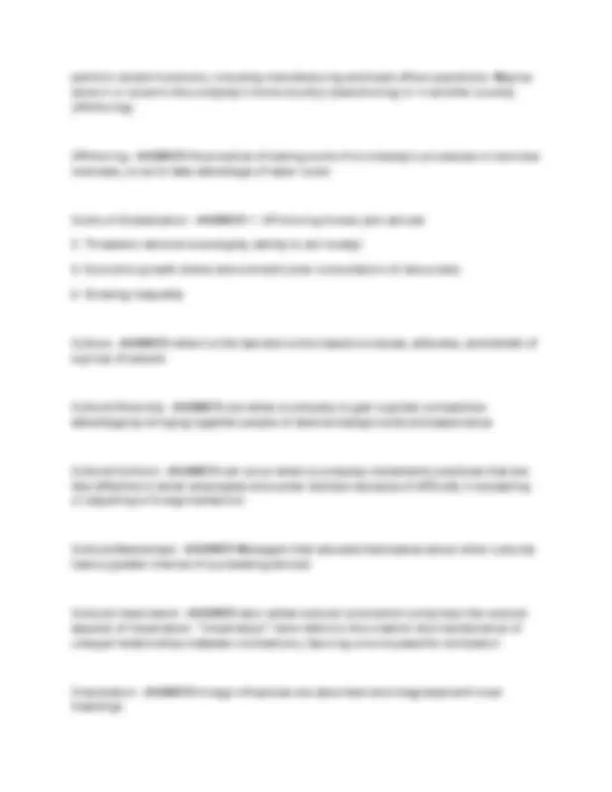
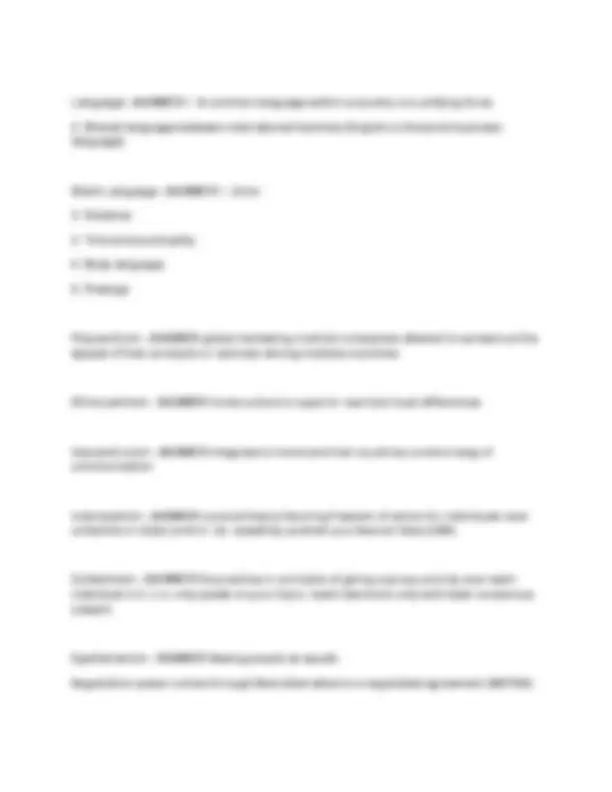
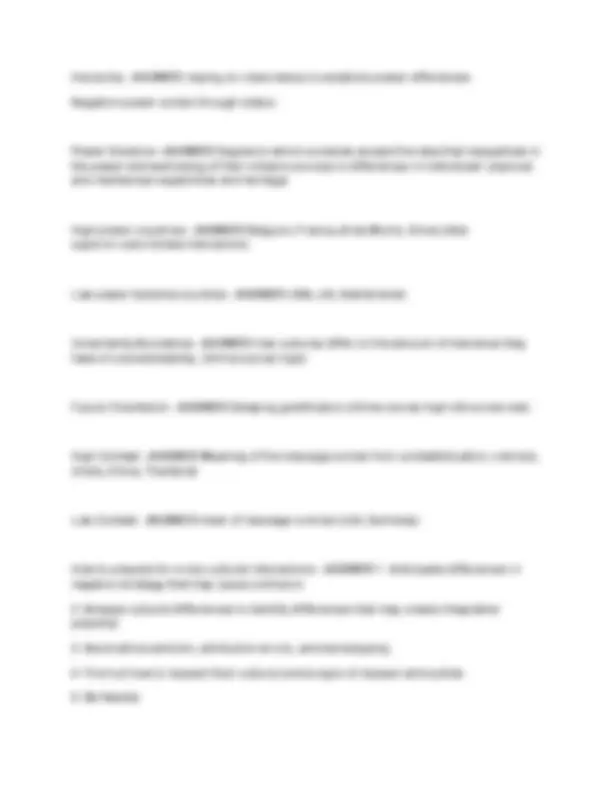
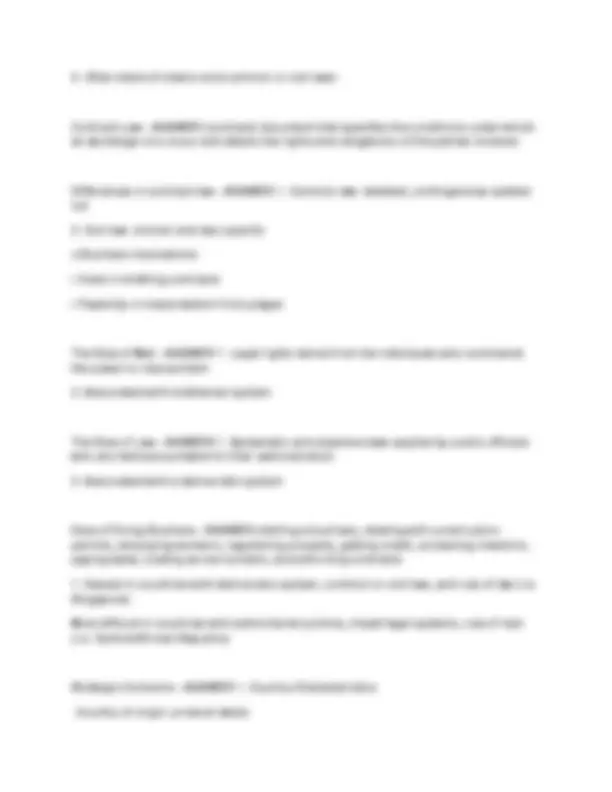
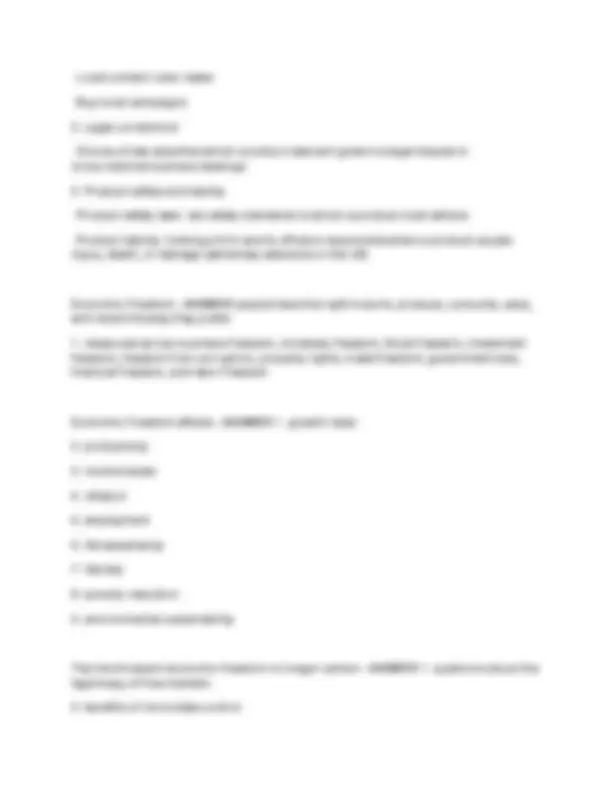
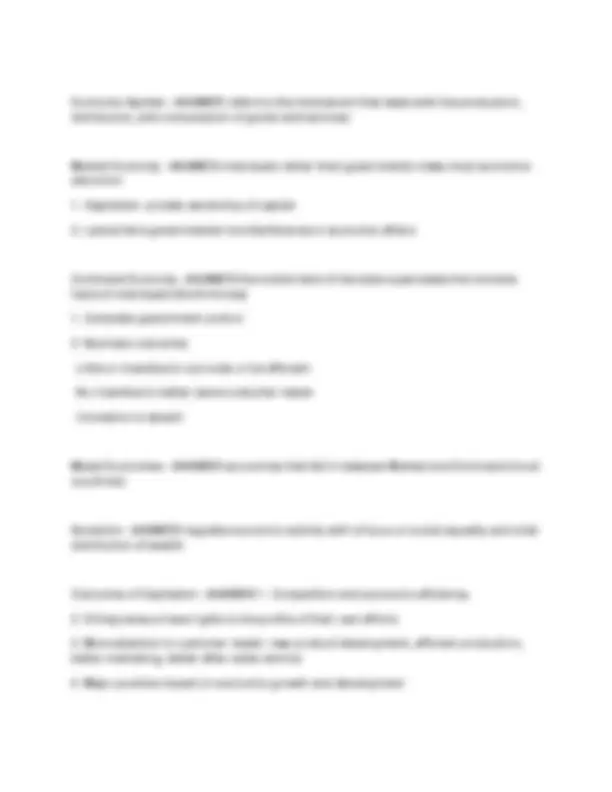
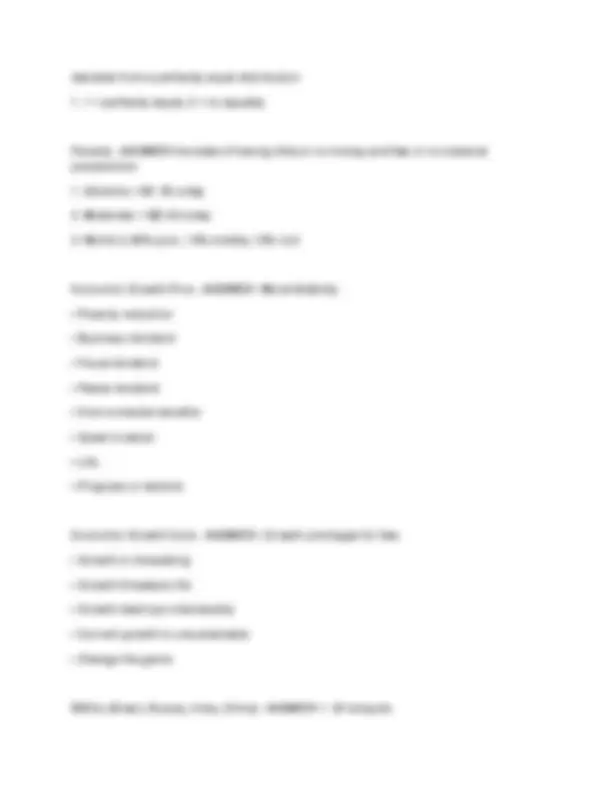
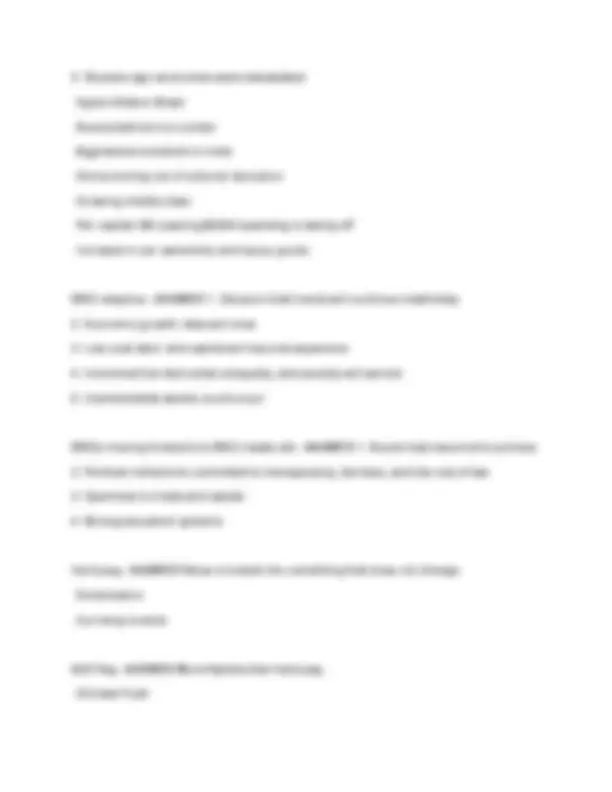
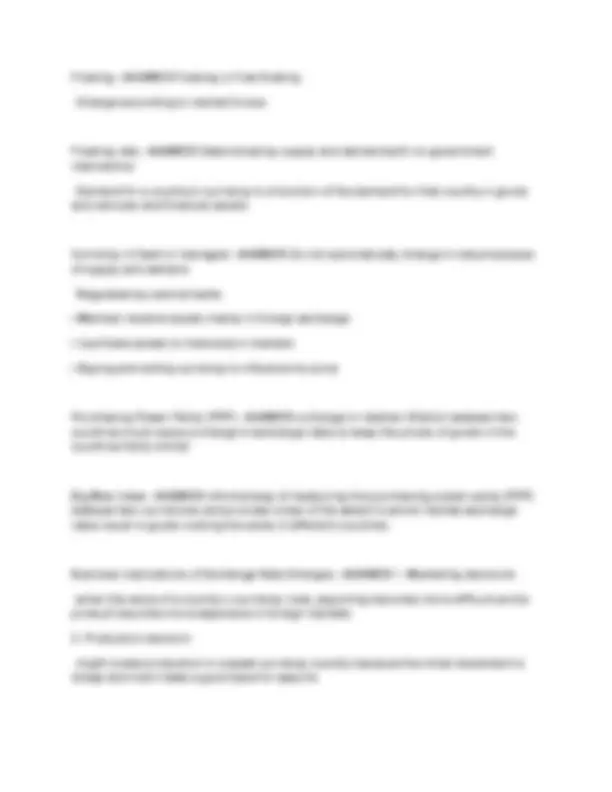


Study with the several resources on Docsity

Earn points by helping other students or get them with a premium plan


Prepare for your exams
Study with the several resources on Docsity

Earn points to download
Earn points by helping other students or get them with a premium plan
Community
Ask the community for help and clear up your study doubts
Discover the best universities in your country according to Docsity users
Free resources
Download our free guides on studying techniques, anxiety management strategies, and thesis advice from Docsity tutors
A comprehensive overview of key concepts and definitions related to international business, including factors driving globalization, models of international business, cultural considerations, political systems, and legal frameworks. It presents a series of questions and answers covering various aspects of international business, making it a valuable resource for students preparing for exams or seeking to deepen their understanding of the subject.
Typology: Exams
1 / 15

This page cannot be seen from the preview
Don't miss anything!










International Business - ANSWER consists of all commercial transactions — including sales, investments, and transportation — that take place between two or more countries
Factors that Drive Globalization: - ANSWER 1. Increases and application of technology
Why companies engage in international business and changes in consumer trends - ANSWER 1. To expand sales
Models of international Business: - ANSWER 1. Merchandise Import
Turnkey Operations: - ANSWER a type of project that is constructed so that it can be sold to any buyer as a completed product
Management Contracts - ANSWER arrangement under which operational control of an
enterprise is vested by contract in a separate enterprise that performs the necessary managerial functions in return for a fee.
Licensing - ANSWER one company gives another company permission to manufacture its product for a specified payment. (ex. Use of NFL name and logo)
Franchising - ANSWER business owned by an entrepreneur or an entrepreneurial group, offering a product or service labeled by a corporation that provides assistance in every aspect of the business, in return for a combination of a flat fee, plus fees based on profits or sales. (ex. McDonalds)
Foreign Direct Investment (FDI) - ANSWER an investment in the form of a controlling ownership in a business in one country by an entity based in another country
Joint Venture - ANSWER a business entity created by two or more parties, generally characterized by shared ownership, shared returns and risks, and shared governance
Strategic Alliance - ANSWER companies that work together, but the agreement is critical to at least one partner
Multinational Enterprises (MNEs) - ANSWER corporation or worldwide enterprise is a corporate organization that owns or controls production of goods or services in at least one country other than its home country.
Physical and Social factors to consider - ANSWER 1. Geographic influences
Outsourcing - ANSWER Where one company contracts with another company to
Language - ANSWER 1. A common language within a country is a unifying force
Silent Language - ANSWER 1. Color
Polycentrism - ANSWER global marketing in which companies attempt to spread out the appeal of their products or services among multiple countries
Ethnocentrism - ANSWER home culture is superior overlook local differences
Geocentricism - ANSWER integrate to home and host countries common way of communication
Individualism - ANSWER a social theory favoring freedom of action for individuals over collective or state control. (ie. speaking up when you have an idea (USA)
Collectivism - ANSWER the practice or principle of giving a group priority over each individual in it. (i.e. only speak on your topic; reach decisions only with team consensus (Japan)
Egalitarianism - ANSWER Seeing people as equals Negotiation power comes through Best alternative to a negotiated agreement (BATNA)
Hierarchy - ANSWER relying on roles/ status to establish power differences Negation power comes through status
Power Distance - ANSWER Degree to which societies accept the idea that inequalities in the power and well-being of their citizens are due to differences in individuals' physical and intellectual capabilities and heritage
High power countries - ANSWER Belgium, France, Arab World, China (little superior-subordinate interaction)
Low power distance counties - ANSWER USA, UK, Netherlands
Uncertainty Avoidance - ANSWER how cultures differ on the amount of tolerance they have of unpredictability. (China scores high)
Future Orientation - ANSWER Delaying gratification (China scores high US scores low)
High Context - ANSWER Meaning of the message comes from context/situation, indirect, (India, China, Thailland)
Low Context - ANSWER mean of message is direct (US, Germany)
How to prepare for cross-cultural interactions - ANSWER 1. Anticipate differences in negation strategy that may cause confusion
Political Risk - ANSWER refers to the risk that political decisions or events in a country negatively affect the profitability or sustainability of an investment
Systematic - ANSWER the risk inherent to the entire market or market segment, Unavoidable,
Procedural - ANSWER create friction that interferes with movements of funds from one unit to the other
Distributive - ANSWER as foreign corporations are starting to get significant profits from its business ventures in the host country, local government might decide to reevaluate its guidelines on the fair wealth distribution
Catastrophic - ANSWER random developments such as "ethnic discord, illegal regime change, insurrection, and civil disorder,"
Common Law - ANSWER based on tradition, precedent, and custom (US and UK)
Civil Law - ANSWER based on very detailed set of written laws and codes (Germany, France, Russia, Japan)
Theocratic Law - ANSWER based on religious teachings (Pakistan, Egypt, Iran)
Contract Law - ANSWER (contract) document that specifies the conditions under which an exchange is to occur and details the rights and obligations of the parties involved
Differences in contract law - ANSWER 1. Common law: detailed, contingencies spelled out
The Rule of Man - ANSWER 1. Legal rights derive from the individuals who commands the power to impose them
The Rule of Law - ANSWER 1. Systematic and objective laws applied by public officials who are held accountable for their administration
Ease of Doing Business - ANSWER starting a business, dealing with construction permits, employing workers, registering property, getting credit, protecting investors, paying taxes, trading across borders, and enforcing contracts
Strategic Concerns - ANSWER 1. Country Characteristics Country of origin- product labels
Economic System - ANSWER refers to the mechanism that deals with the production, distribution, and consumption of goods and services
Market Economy - ANSWER individuals rather than governments make most economic decisions
Command Economy - ANSWER the visible hand of the state supersedes the invisible hand of individuals (North Korea)
Mixed Economies - ANSWER economies that fall in between Market and Command (most countries)
Socialism - ANSWER regulate economic activity with a focus on social equality and a fair distribution of wealth
Outcomes of Capitalism - ANSWER 1. Competition and economic efficiency
State Capitalism - ANSWER refers to a system in which the government explicitly manipulates market outcomes for political purposes
Developing Countries - ANSWER 1. Largest number of countries
Emerging Markets - ANSWER 1. Fast growing, relatively prosperous
Developed Countries - ANSWER 1. High per capita income and standards of living
Gross National Income (GNI): - ANSWER the broadest measure of a county's economic activity
Gross National Product (GNP) - ANSWER the total value of all final goods in services within a nation
Gross National Product (GDP) - ANSWER the total market value of goods and services produced by workers within a nation's borders
deviates from a perfectly equal distribution
Poverty - ANSWER the state of having little or no money and few or no material possessions
Economic Growth Pros - ANSWER • Moral Stability
**- Poverty reduction
Economic Growth Cons - ANSWER • Growth privileges for few
**- Growth is misleading
BRICs (Brazil, Russia, India, China) - ANSWER 1. IB hotspots
BRIC skeptics - ANSWER 1. Delusion that trends will continue indefinitely
BRICs moving forward (no BRIC meets all) - ANSWER 1. Sound macroeconomic policies
Hard peg - ANSWER Value is locked into something that does not change Dollarization Currency boards
Soft Peg - ANSWER More flexible than hard peg Chinese Yuan